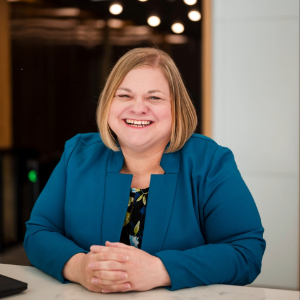Financial Planning Tips for When You're Just Starting to Invest

When you’re starting to invest, it can be overwhelming. There’s a lot of information, industry jargon, and things you can’t control. People talk about the market as a shorthand. If you aren’t in this world day in and day out, you may be missing some things that could help you in the long run. There’s no need to panic or worry, though, because with a little knowledge to get your investment life off on the right foot, it isn’t so scary.
First of all, let’s give you a round of applause! To some people, investing is such a big concept that they can’t wrap their brain around. They kick the can down the road and avoid the subject. But that isn’t you! You are capable, you can learn, and you’re ready to go for it. Here are a few tips for when you’re just starting to invest that will help you sort through some questions and give you a foundation of knowledge.
Prioritize Your Goals
Prioritizing goals is a big one that’s challenging for a lot of people. Investing is a balance of funding your life today versus funding your life tomorrow. Often, this balance trips people up. They think, “How could I possibly know what my needs will be in five years? How do I prioritize that?”
Prioritizing your goals for investing can also be challenging when you’re still paying for your life yesterday. In other words, if you’re paying down debts, that could be a more immediate need than what will happen at some time in the distant future.
When those questions come up, that’s when you have to consider and balance managing debt versus cash flow needs versus planning for the future. Gather all of your bank statements, debts, and any investments that you are making (perhaps a retirement account from your employer) and get the lay of the land so you can see where you need to put the most of your money right now. Then, you can seriously think about starting to invest. Talking to a financial advisor will help you reach your goals once you have clarified them.
Think of Your Investments as Buckets
Think of your three biggest or most immediate investments as buckets. Just like when you’re filling pots to boil water, you can’t fill three pots from one water source at the same time. The same is true when you’re starting to invest. You can’t fill all of the buckets to the top at once. This is why prioritizing is so important!
You know you’re not ready to start to expand your investments if there isn’t enough money for general savings, emergency expenses, or everyday living. Be sure that the initial goal bucket is full so you can move to the next one.
The reality is, there will always be short-term needs and emergencies (and a credit card is not an emergency account!), so you must have some savings before you can start to invest beyond what you may already be doing for retirement through your employer.
Think of Your Investments as a 3-Legged Stool
Another way to think of things when you’re starting to invest is by thinking of them as a 3-legged stool: Emergencies, general, and retirement savings. If one leg is too short, the whole stool is imbalanced and at risk of tipping over.
That is to say, don’t have a one-track mind and only filter money into your retirement investments if you haven’t taken a look at how you’ve prepared yourself for emergencies and cash to meet your daily expenses, too. This leads me to…
Fund Your Emergency Savings First
My general rule of thumb is to fully fund your emergency savings account before you start investing. This protects your investments because if there is an emergency, you won't have to dip into your retirement account (and risk incurring penalties and taxes, which means even more cash you have to hand over).
Say you don't have enough money saved up, something happens, and the market is down right now. It’s not a good idea to cash in investments when the market is down. Personally, I don’t want anyone calling me saying they want to take $10,000 out of their account when the market is down!
If you have more in your emergency fund, it’s okay to take more risks in your other investments. You’ve “covered yourself” in that way and have cash reserves if something goes pear-shaped.
Use Systematic Investing When First Starting to Invest
Systematic investing is actually how most people start, whether they know it or not! Most people are systematically investing in employer retirement accounts because they’re putting in the same dollar amount for each check, and the funds are allocated automatically on their behalf.
I’m a big believer in systematic investing. Basically, anything that's ongoing that’s part of your plan is a systematic investment. This is also known as Dollar Cost Averaging. In a nutshell, this is what it looks like: Let’s say you put $500 into an investment on the 1st of each month. If the market is down, you'll automatically buy more shares. If the market is up, you’ll buy less - and all the shares you bought before will make you more money.
At the end of the day, starting to invest is like that old proverb about planting trees: “The best time to plant a tree was 20 years ago. The second best time is now.” Think through these tips and, if you do nothing else, set up automatic investments and get them going. It doesn’t matter how much, just start! Then, you can talk to a financial advisor to help you make wise investment choices that will set you up for financial success and security for years to come.



